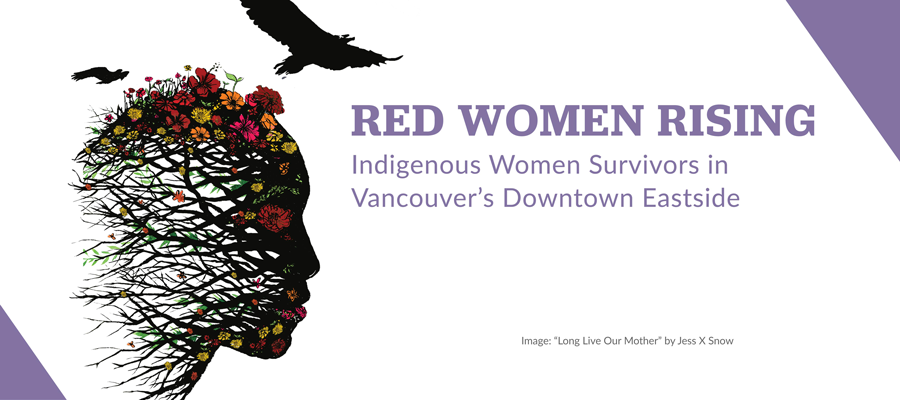Treat intimate partner violence as the pandemic it is

We’ve all heard it a million times during the COVID-19 pandemic: for your own safety, stay home.
To many of us, this is excellent advice. For others—almost all of them women—the combination of long hours at home and new stresses brought on by the pandemic will lead to control and abuse at the hands of an intimate partner.
To make matters worse, heightened financial insecurity due to the pandemic will force many victims to remain with their abusers, physical distancing will make it more difficult to rely on an existing support network, and accessing services by telephone or online may be impossible in the constant presence of an abuser.
As expected, the early data offers evidence of significantly higher rates of intimate partner violence since the start of the pandemic—a well-documented phenomenon in times of disaster, outbreak and other situations marked by significant stress across society. For example, after Hurricane Katrina, researchers found a near-doubling in psychological and physical abuse among women. Similarly, Human Rights Watch has previously documented how Ebola and Zika virus outbreaks had particularly harmful impacts on women and girls, and reinforced long standing gender inequity.
The UN now estimates that six months of lockdowns to prevent the spread of COVID-19 could lead to 31 million additional cases of intimate partner violence globally, calling it a “growing crisis within the crisis”
Even as the lockdown has made it harder for victims to reach out, the federal government’s consultations with frontline service providers suggests rates of reported violence are up 20 to 30 per cent, with much higher increases in specific regions. The Vancouver’s Battered Women’s Support Services says their staff saw a 300 percent increase in calls over a three week span, and some advocates in Toronto estimate they have also seen a tripling of cases. Meanwhile, Statistics Canada recently released results of a pandemic survey showing that one-in-ten Canadian women are very or extremely concerned about the possibility of violence in the home. The UN now estimates that six months of lockdowns to prevent the spread of COVID-19 could lead to 31 million additional cases of intimate partner violence globally, calling it a “growing crisis within the crisis” and urging all nations to do more.
To their credit, governments across Canada have reacted, but only to treat the symptoms of intimate partner violence. The federal government has announced $50 million in emergency funding for women’s shelters and other support services, and the BC government is working closely with BC Housing and other service providers to find temporary safe spaces for victims, including in hotels and motels where necessary. As Women and Gender Equality Minister Maryam Monsef told the Canadian Press, “My team and I got on the phone in that first 48 hours with stakeholders and said, ‘What do we do? What’s our first step?’ And they all said the same thing: ‘Rates of gender-based violence is going to increase, so you’d better start ensuring that shelters have capacity, sexual-assault centres have capacity and that different women’s organizations have capacity.”
Increased capacity for such services is enough to rank Canada’s response well above many peer jurisdictions, but is it the robust action that an epidemic of violence deserves? Like it or not, we are choosing to treat intimate partner violence as just another consequence of the pandemic by adding it to the long list of sectors in need of financial support. Students get some loan forgiveness, businesses get some access to credit, and women fleeing violence get a shelter bed.
There is another option: treat an outbreak of intimate partner violence as a serious threat to our health and safety.
Minister Monsef says her department is now working on a second follow-up plan of action, but the ideas she is considering—direct support to victims, filling additional service gaps in frontline agencies—remain almost exclusively focused on treating the symptoms.
There is another option: treat an outbreak of intimate partner violence as a serious threat to our health and safety. Increasing the number of hospital beds is a necessary but insufficient step to quell the COVID-19 pandemic, which is why we are physical distancing and researching a vaccine. Perhaps increasing shelter beds is not enough to address our intimate partner violence affliction either. Imagine if we decided to take real steps—drastic steps even—to prevent the spread now and in the future.
The first step is for governments to make combating intimate partner violence a pillar of the broader pandemic response, rather than treating it as a separate issue. This means showing a willingness to take chances and try new approaches for the sake of public safety. In the UK, the Women’s Equality party called for special police powers to evict abusers from homes for the duration of the lockdown. In France and Spain, governments have directed women to use a code word with their pharmacists if they are experiencing violence, but such a system could be expanded across society so that all of us are responsible for being informed and keeping each other safe.
Toxic masculinity and patriarchy are the root contagion.
We also know that risk escalates with access to firearms. In fact, the RCMP now believes an incident of intimate partner violence may have been a catalyst for the recent mass shooting in Nova Scotia. While the federal government’s recently announced partial ban on assault weapons is a step in the right direction, it is far less ambitious than the headlines would suggest.
But policy change alone will not be sufficient. Toxic masculinity and patriarchy are the root contagion, and the prevalence of intimate partner violence is intertwined with the social acceptance of intimate partner violence across countries. In addition to treating symptoms, why not address social acceptance head-on and go after the disease itself.
Our political and public health leaders should make it their goal to mobilize public opinion and give voice to a collective outrage over the continued plague of intimate partner violence. At the very least, law enforcement should prioritize the message that all forms of gender based violence will not be tolerated, and emergency funding should be allocated to an omnipresent advertising and awareness campaign, following the lead of the Irish government.
It will take time, effort, and resources to put in place the conditions for women’s economic security and build the universal social programs that offer a foundation for their independence.
Strong political leadership during the crisis will also help to build momentum for a sustained policy response long after the COVID-19 pandemic has subsided. It will take time, effort, and resources to put in place the conditions for women’s economic security and build the universal social programs that offer a foundation for their independence. Until progress has been made in areas such as reducing poverty, raising minimum wages, increasing our affordable housing supply, and offering universal, affordable child care, economic realities will continue to force many women and their children to remain with an abuser.
Women in Canada also hold many intersecting identities that significantly impact their likelihood of experiencing violence and how various systems will respond to them. Indigenous women, for example, face higher rates of poverty and violence as a result of historical and present-day racism and colonialism in Canada, which is why implementing the calls to action of the Truth and Reconciliation Commission and the calls to justice of the National Inquiry into Missing and Murdered Indigenous Women and Girls are also necessary for combating all forms of gender based violence.
The COVID-19 pandemic has highlighted gender inequality in all its shapes and forms. Women are more likely to have lost work, are less likely to be eligible for EI, and are overrepresented in jobs deemed essential during the pandemic. As the UN Secretary General has observed, “women’s unpaid care work has increased exponentially as a result of school closures and the increased needs of older people. These currents are combining as never before to defeat women’s rights and deny women’s opportunities.”
A sharp rise in intimate partner violence cannot be just another side effect of the pandemic. Governments need to step up today and push for a cure.



